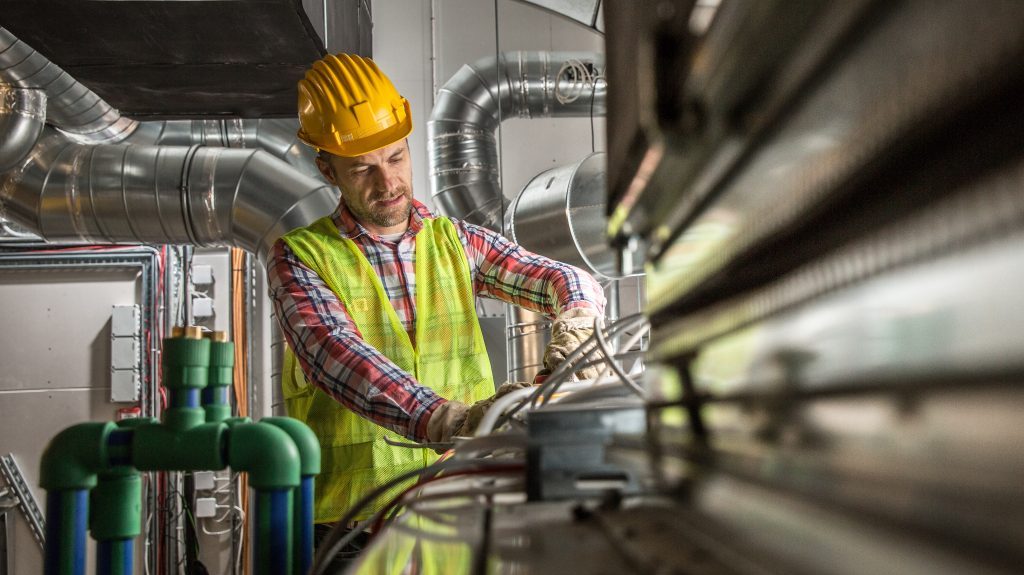The key to innovation and efficiency is technology, but it’s a moving target: what you worked at yesterday isn’t necessarily going to help you tomorrow.
Perhaps no where is this becoming more apparent than within the skilled construction trades. Things have changed, however, and it’s putting the onus on skilled trades to upgrade to keep pace.
Many changes have already been incorporated. The Carpenters’ Union Local 27 and College of Carpenters and Allied Trades, for example, added a special section for training members on laminated beams to keep current with the trend towards mass lumber construction.
Meanwhile, the International Brotherhood of Electrical Workers is also seeing technology impacting their trade and is working to get members trained up to stay ahead of the curve, says Adam Van Steinburg, RSE and international representative, first district, Canada.
“We like to say the wiring has become easier but the management of those products is a lot more complicated,” he says, noting a switch isn’t just on or off anymore, it’s more likely to be wired to a low voltage control system with addressable switches and connect through the Building Information Management System. “There’s information security to know, what information can this switch have? What can it connect to? Who has access?”
It’s new ground for electricians and the old school tradespeople are going to have to carve out time to add to their skills and get certified as new technology becomes ubiquitous.
“It’s in everything, utilities, gas, power, solar, all kinds of stuff for people to grapple with,” he says. “I spend a lot of time selling our members on this (signing up for training) but not as much as I used to have to sell it. I think they’re getting it now.
“My dad was an electrician and the attitude was, once you were an electrician, you were an electrician, you might get code updates but that was it,” he adds. “And a lot of members are in the trade because their families were electricians. But it’s all changing.”
Adding the growing demand for apprentices to enter the trade and get qualified as boomers retire, training is ever more front and centre with women now leading the training on a 2:1 ratio.
Low voltage control systems have brought some benefit too, he adds, since the wiring is lighter and small and easier to run.
“You see someone still on the tools over 45 years old and they’re pretty beat up,” Van Steinburg adds. “It’s been hard work.”
Regardless of the trade, continuous learning will be the key to seamless and stable employment, says Martin Luymes, vice-president, government and stakeholder relations at the Heating, Refrigeration and Air Conditioning Institute of Canada (HRAI).
He says his sector is acutely aware of impending technology changes and the need to keep pace.
“It’s really top of mind but our members in the field aren’t always looking five to 10 years ahead,” he says, noting it falls to industry organizations like HRAI to flag those changes that will have the most impact to allow those members to adjust.
While the most pressing current issue is attracting young people into the sector and getting them trained, the horizon issue is linked to government reaction to climate change. Legislation will push the HVAC sector deeper into more technology, he says, and the sector needs to ramp up.
Natural gas heating, he says, will probably be banned by 2050 for both new and existing installations. While it seems a long way off, he says, HVAC people need to start training on the technology and its installation.
The united association has already moved on it with a Brampton training centre designed to keep their members on the technology edge of change.
He says there’s already been a huge change in refrigerant mediums with federal legislation banning certain CFCs and demanding higher efficiency air conditioning units.
The issue now is that the replacement for CFC, HCFC, are more volatile and prone to fire so the installation is ever more critical. Add on more digital zone controls tied to BIM and there are expanding opportunities for HVAC installers to add more tasks to their job list and this increase revenues.
Similarly, ground source heat pumps are more efficient than air source heat pumps but require an up-skilled knowledge of sinking the cooling lines into the ground. It’s fairly simple in green field installation but gets much more complicated in urban retrofits where space is at a premium.
“What we’re saying is there should be a culture change in HVAC,” he says. “We engineer comfort and that should include not just the HVAC but the building envelope, insulation and windows even.”









Recent Comments
comments for this post are closed